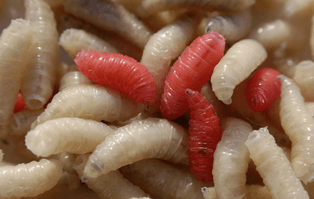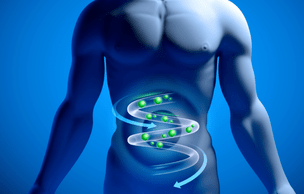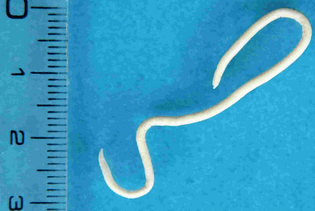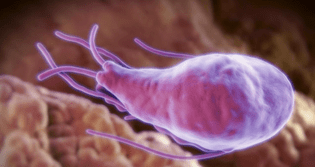It is difficult for the average person to imagine how many parasites can threaten their health. These "settlers" can live for years in the human body, literally sucking life out of it and poisoning it with their poison.
Parasitic type

From a medical point of view, parasites include unicellular and protozoa. Depending on their habitat, they are divided into exoparasites (lice, fleas, etc. ) and endoparasites.
Endoparasites have their own subspecies:
- Larvae are placed by insects.
- Protozoa (amoeba, lamblia).
- Helminths (worms or worms).
Path of infection
Each parasite has its own way of penetrating into the human body. The most common way is food, that is, with the help of water or food. Many insects can carry parasitic larvae, polluting the environment. By consuming raw water, food that is not washed and not cooked properly, a person is infected with parasites.
Some species are spread directly through person-to-person contact - this path is called household contact. For infections, it is not necessary to have direct contact with the distributor; just use household items. This is how enterobiasis and some other forms of parasites are spread.
The path of infection carried by the same popular vector. In this case, the parasites are carried by blood-sucking insects. Therefore, they can be obtained after being bitten by mosquitoes or other insects.
The last way parasites enter is the percutaneous path, the second name active. Infection occurs through the penetration of larvae through the mucous membranes and skin. This occurs due to contact with contaminated soil or water in the body of water.
Symptoms
Parasites in the human body can live for a long time and do not appear. Of course the symptoms, but it disguises itself as another disease. That is why a person for a long time may not realize that he is infected.

Symptoms most often appear depending on the location of the larvae, but the body can signal infection and other manifestations. The most common are:
- Flatulence,and persistent, indicate the presence of worms in the small intestine;
- Diarrhea.Caused by the absorption of sodium chloride by parasites;
- Constipation.Worm cries can clog some organs;
- Pain in joints and muscles.This pain is caused by the migration of larvae through the human body, to which the immune system responds in this way;
- Allergies.Parasites themselves are allergens to the body, and damage to the stomach wall contributes to digestive disorders and the entry of food molecules into the blood;
- Appearance of granuloma.This is a type of neoplasm that results from the membrane of an egg cell that is destroyed by a parasite;
- Manifestations of dermatology;
- Anemia.Often people suffer from anemia precisely due to the activity of parasitic forms;
- Significant weight fluctuations;
- Mental disorders.In the process of vital activity, parasites release toxins that negatively affect the host nervous system. Consequences of body poisoning can be neurosis, depression, anxiety;
- Bruxism.This is grinding teeth during sleep. This is the reaction of the nervous system to the appearance of a foreign body. But this statement cannot be scientifically proven by science;
- Sleep disorders.As a rule, arises from uncomfortable sensations. An example is the cream worm here, which lays its eggs at night. Leaving the rectum, the cream worm releases toxins that cause severe itching;
- Dysbacteriosis;
- Oncological diseases;
- Chronic fatigue.Occurs due to lack of nutrients, which negatively affects the condition of the body;
- Respiratory tract disease.A number of parasites can live in the respiratory tract, causing disease. Other parasites cause colds by moving through the respiratory system;
- Immune disorders.Absorption of most vitamins by parasites causes impaired immune function and most likely infection.
But there are also symptoms characteristic of the presence of parasites in certain human organs. For example, papilloma, the appearance of bald spots on the head, cracked heels, etc. , may indicate the life of parasites in the liver. In addition, the presence of certain types of parasitic forms can provoke certain types of diseases in humans.
Disease Detection

Unfortunately, some doctors refuse their job and do not send someone to a special study to identify parasites in the body. The most common analysis is fecal delivery for worm eggs. The fact is that parasites can inhabit various organs.
There are cases when worms are found in a person's brain and eyes. Is it possible that their eggs from the brain enter the feces? Most likely not. Although there are worms in the intestine, parasitic eggs may not be found.
First of all, the doctor must perform a visual examination of the patient. Externally, one can suspect the presence of human parasites. The easiest way to detect it is to do a blood test that aims to detect special antibodies to worms.
Description of Human Parasites
There are several types of parasites that inhabit the human body.
Worms or helminths are a type of worm.The size depends on the species, for example, the female ringworm reaches 40 centimeters. Some species can exceed 10 meters. The most popular worm habitat is the gut, but it is often found in other organs, even in the brain.
For example, roundworm larvae circulate throughout the body, accumulate nutrients, and return to the intestines, where they grow and reproduce. They often live in the respiratory organs. The presence of ascaris in the human body is accompanied by functional disturbances of internal organs, intoxication of the body, manifestations of allergies and even an increase in temperature.
Among the tapeworms is the pig tapeworm, which travels to the brain through the blood.  This parasite enters the body through poorly processed meat products. This worm lives up to 20 years.
This parasite enters the body through poorly processed meat products. This worm lives up to 20 years.
Pinworms most often develop in children, but are quite common in adults. This worm is small in size, reaching 1 centimeter in length. The spread of pinworm eggs occurs by means of household contact. Females come out of the rectum and lay eggs in the outer folds of the anus. Toxins released by females cause severe itching, which causes eggs to fall into human hands and transfer them to all objects around them.
The second name of enterobiasis is dirty hand disease. Everyone who comes in contact with the carrier may be infected. Therefore, when cream worms are found, it is recommended to treat the whole family.
Toxocarais a type of parasite that lives in dogs. They enter the human body and also grow well in it. Unlike this worm in a dog's body, human toxins do not come out, but it does affect many organs and cause certain diseases. Toxocaras can be transmitted through the soil, as these worm larvae come out along with the dog feces. But parasitic eggs can spread from a dog's wet breath.
Alveococcus and Echinococcusinfect the body in various ways. Their danger lies in the fact that the larvae turn into cysts, which can be found in various internal organs.
Giardia is the easiest.Like the cream worm, Giardia most often infects children. They not only reduce a child's immunity, but also cause delays in children's mental and physical development.
They not only reduce a child's immunity, but also cause delays in children's mental and physical development.
This list is not yet complete. The main danger of parasites is that no one is immune from infection. Their secrecy leads to the fact that a person feeds parasites for many years without suspecting them. Adherence to personal hygiene, continuous cleaning of wet housing and adherence to the heat treatment norms of meat products is not a bad prevention of infection. It is useful to undergo a doctor's examination and pass the necessary tests every six months, to prevent the spread of parasites.
















































